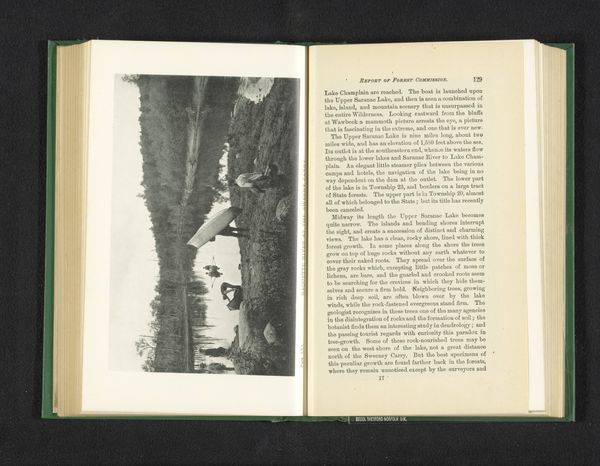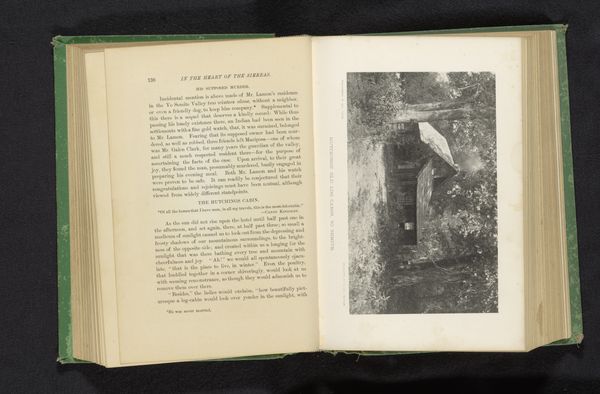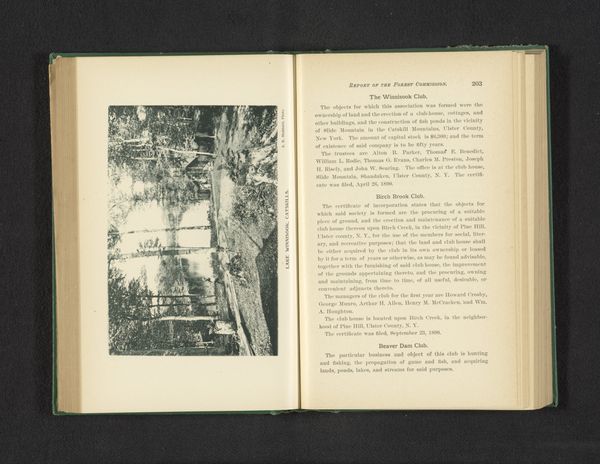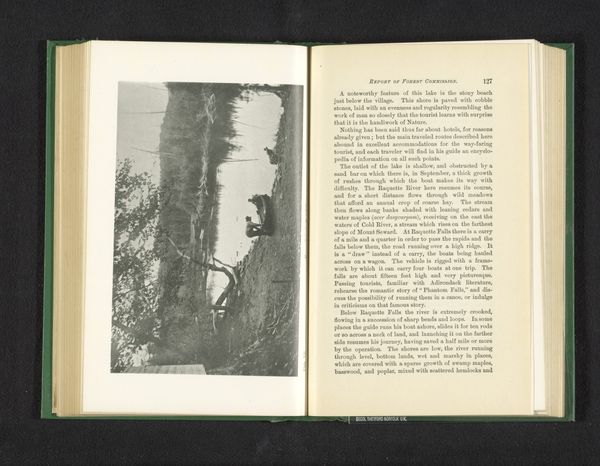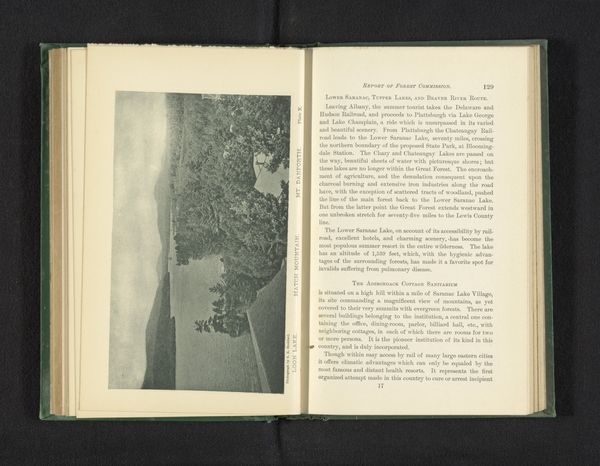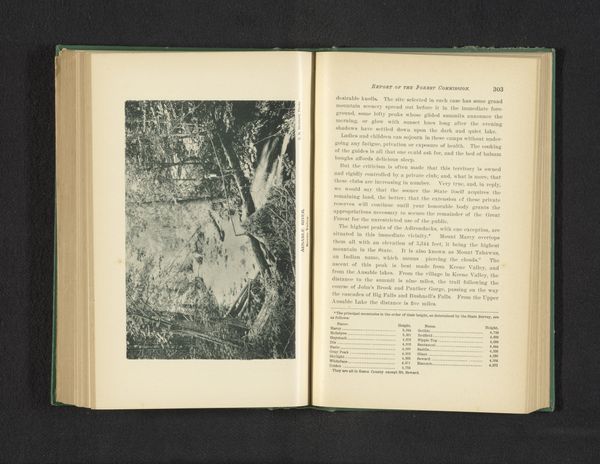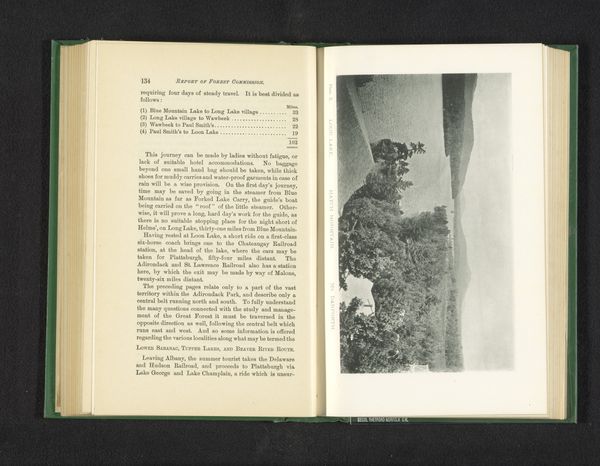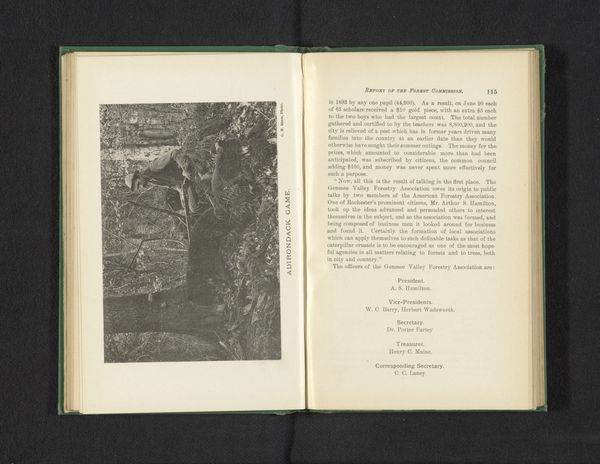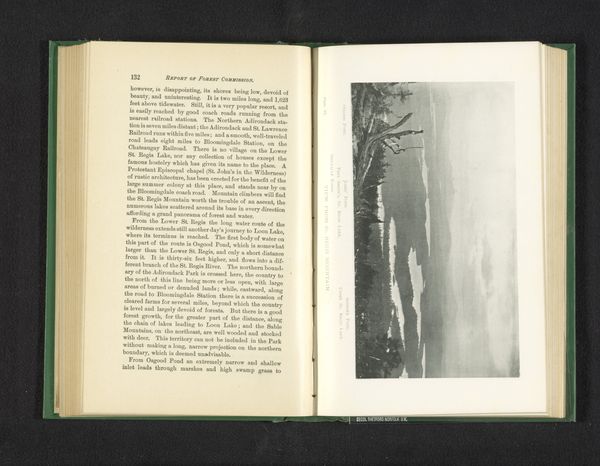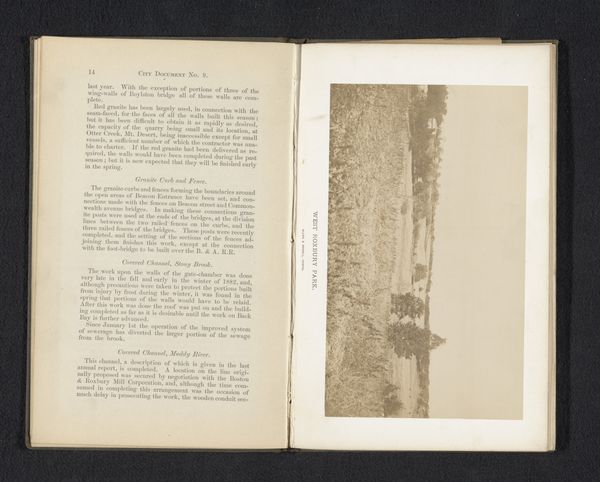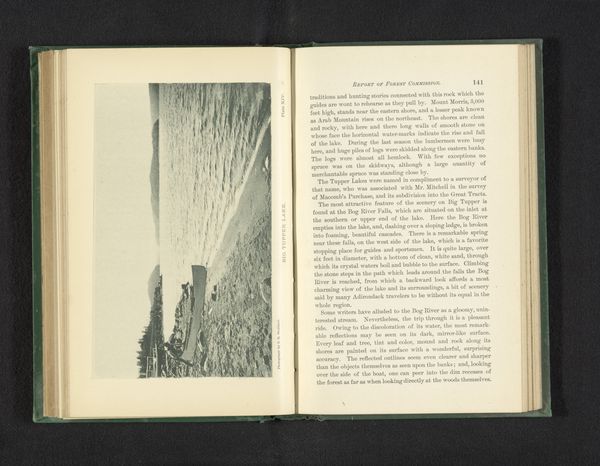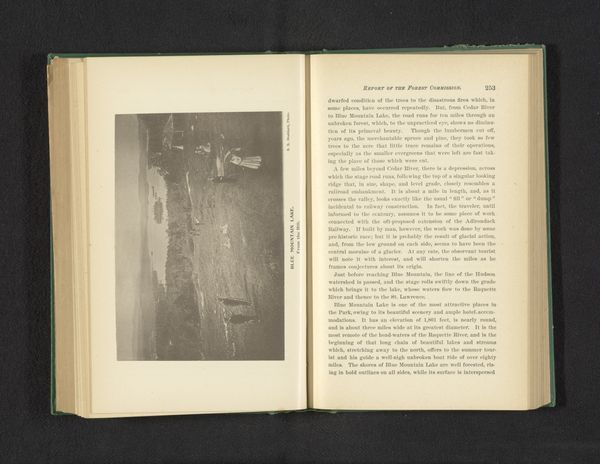
print, paper, photography, gelatin-silver-print, albumen-print
# print
#
landscape
#
paper
#
photography
#
mountain
#
gelatin-silver-print
#
albumen-print
Dimensions: height 100 mm, width 161 mm
Copyright: Rijks Museum: Open Domain
Editor: So this is “Mt. Noon Mark,” a gelatin-silver print from 1893 by Seneca Ray Stoddard. It’s an image of a mountain scene printed within the pages of a book. It has a very documentary feel; it's so straightforward. How do you interpret this work? Curator: I see this work as engaging with the complex relationship between the representation of nature and the assertion of control. Stoddard was documenting the Adirondack landscape, a site increasingly impacted by industrialization and tourism at the end of the 19th century. Consider the placement within the book itself. What does it mean to contain nature in this way? Editor: That’s interesting. I was only looking at the image as capturing nature, not *containing* it. So, you are saying the medium is important, not just the image? Curator: Absolutely. Think about the politics of preservation at the time. Who had access to these spaces? Whose narratives were being told, and whose were being erased? Stoddard’s photographs, while seemingly objective, also participated in constructing a particular vision of the Adirondacks, one that often sidelined Indigenous presence and prioritized a romantic, pristine wilderness. This raises questions about whose interests are being served by this depiction. Editor: It makes you think about whose voices are missing from the conversation. So, looking beyond the surface beauty reveals a more complex and politically charged picture. Curator: Precisely. We have to ask, what is not being shown, what stories remain untold? Looking at photographs like these through that lens reveals a fascinating tension between the desire to preserve and the realities of power and privilege. Editor: That totally changes how I see this photograph. It’s a good reminder that even seemingly straightforward images have deep historical and social roots. Curator: Indeed. It challenges us to consider the power dynamics embedded within seemingly neutral representations.
Comments
No comments
Be the first to comment and join the conversation on the ultimate creative platform.
